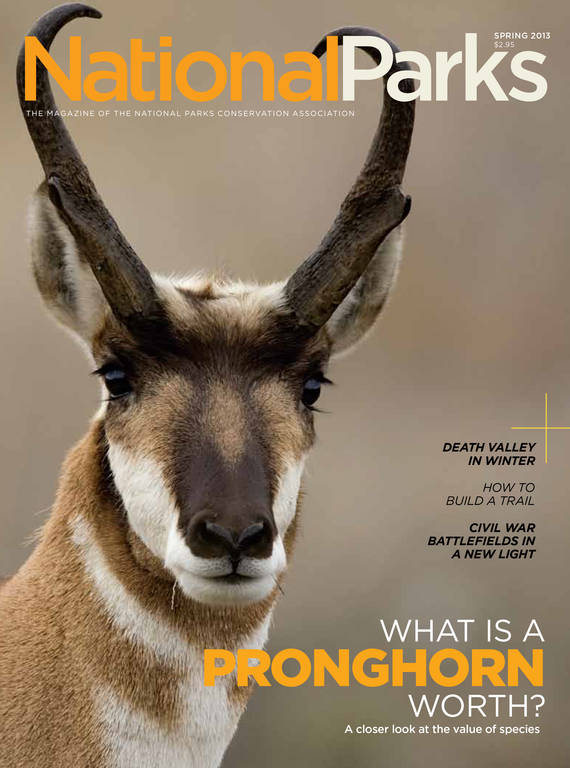Spring 2013
One of a Kind
Scientists have identified an unlikely new lizard species in Rocky Mountain National Park.
On a cool August morning in Colorado, herpetologist and National Geographic Explorer Neil Losin set out along Rocky Mountain National Park’s Lumpy Ridge Trail. Pine needles crunched beneath his feet as he hiked through mountainsides of vanilla-scented ponderosa pine and boulders pieced together like a giant geological puzzle. Losin was on the hunt for something small: a lizard—the only lizard species, in fact, rumored to live in the park.
He was there as part of BioBlitz 2012, a joint effort by the National Park Service and National Geographic to unleash hundreds of park staff, scientists, students, and volunteers on a mission to survey as many species as possible in a single day. “I kind of lucked into the assignment,” says Losin. “I had just moved to Boulder a few weeks before. National Geographic knew me, and they knew I liked lizards. So they sent me out on what they probably thought was a fool’s errand.”
Armed with his camera, visitor snapshots of the suspected species, and a tiny “noose” to catch his subjects, he forged ahead under a cloudy sky that typically sends lizards into hiding. But Losin was optimistic. Years of unofficial sightings had placed the lizards in the lowest reaches of the park, and within a half-mile of the trailhead he saw scenery that matched the visitors’ photos. Losin broke from the trail and began creeping toward the rocks.
As if on cue, the sun pushed through the clouds, and Losin caught movement at the edge of his vision. A tiny lizard hatchling scurried along a log. At just an inch long, it was too small to catch, but within minutes, Losin found a larger lizard basking on a rock. He had to capture and document it for the find to be official. “I just kept thinking, ‘Don’t screw this up—this might be the only one you ever see,’” he says.
Stealthily, Losin lowered the nylon thread of the noose around the lizard’s neck. Within moments, the tiny creature was perched in Losin’s hand. He weighed, measured, and photographed the lizard, then returned it to its sunny spot. A shock of blue across its neck hinted that the reptile might be a subspecies of fence lizard. Later, to be sure, Losin contacted Adam Leaché, curator of herpetology at the University of Washington. It turns out the lizard Losin documented had recently been reclassified as its own species: a plateau fence lizard.
The discovery answered questions that had nagged the Park Service since 2007, when a local rock climber named Kurt Johnson spotted the reptile and sent snapshots to park staff. Johnson’s find delighted officials, especially Jeff Connor, a natural resource specialist with the park. “I always tell visitors, keep your eyes open,” he says. “If you see something unusual out there, don’t hesitate to tell us about it. The fascinating thing about Rocky Mountain National Park is that nothing is set. Things are changing all the time.”
But a demanding schedule kept Connor from acting on those sightings until last August’s BioBlitz. Losin’s arrival offered the perfect opportunity to get the discovery in the record books.

National Parks
You can read this and other stories about history, nature, culture, art, conservation, travel, science and more in National Parks magazine. Your tax-deductible membership donation of $25 or more entitles…
See more ›By the end of the BioBlitz, participants had identified 489 species, including 289 species of plants, 89 bird species, 72 different types of insect, and 12 mammals. But the lizard was an especially intriguing find—only one other reptile, the western garter snake, is known to exist in the park. Based on their understanding of reptiles, researchers believe altitude might be to blame for the lizard scarcity. Rocky Mountain bottoms out at a breath-stopping 7,800 feet, and its peaks rise to almost twice that height. Its sub-zero winters can spell certain death for reptiles, which can’t regulate their internal thermostat when temperatures drop, so researchers are still scratching their heads over why this lizard survives where others do not. Losin thinks they might simply be better than other reptiles at burrowing down into protective shelter. Connor wonders if global warming might be the reason. For now, the mystery will remain; the park has no plans to study the lizard.
All told, Losin caught a total of four plateau fence lizards—and saw at least half a dozen others—on two trips to scout the species. His find proves that there’s always something more to discover, even in a park that’s visited millions of times a year.
“It’s really cool to go to a place as well known and well studied as a national park and realize that we don’t know everything that’s there,” says Losin. “We have a long way to go to understand biodiversity, even in the most iconic places in the country.”



